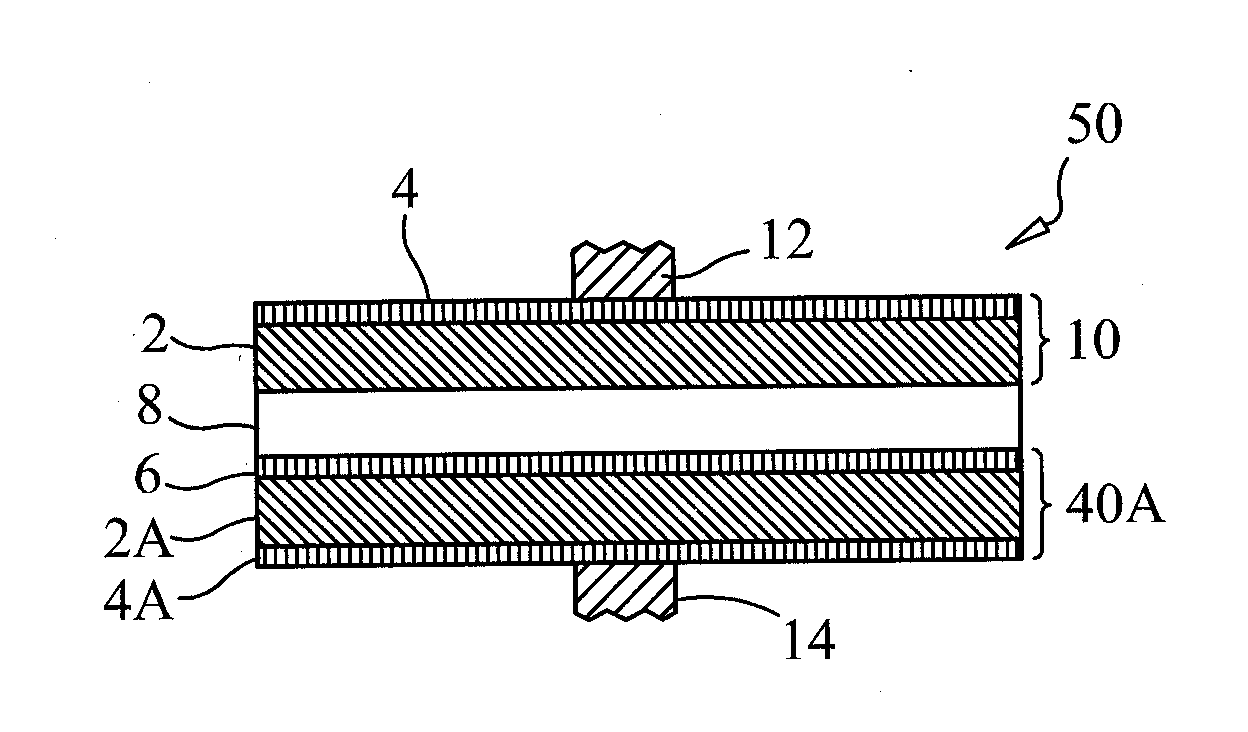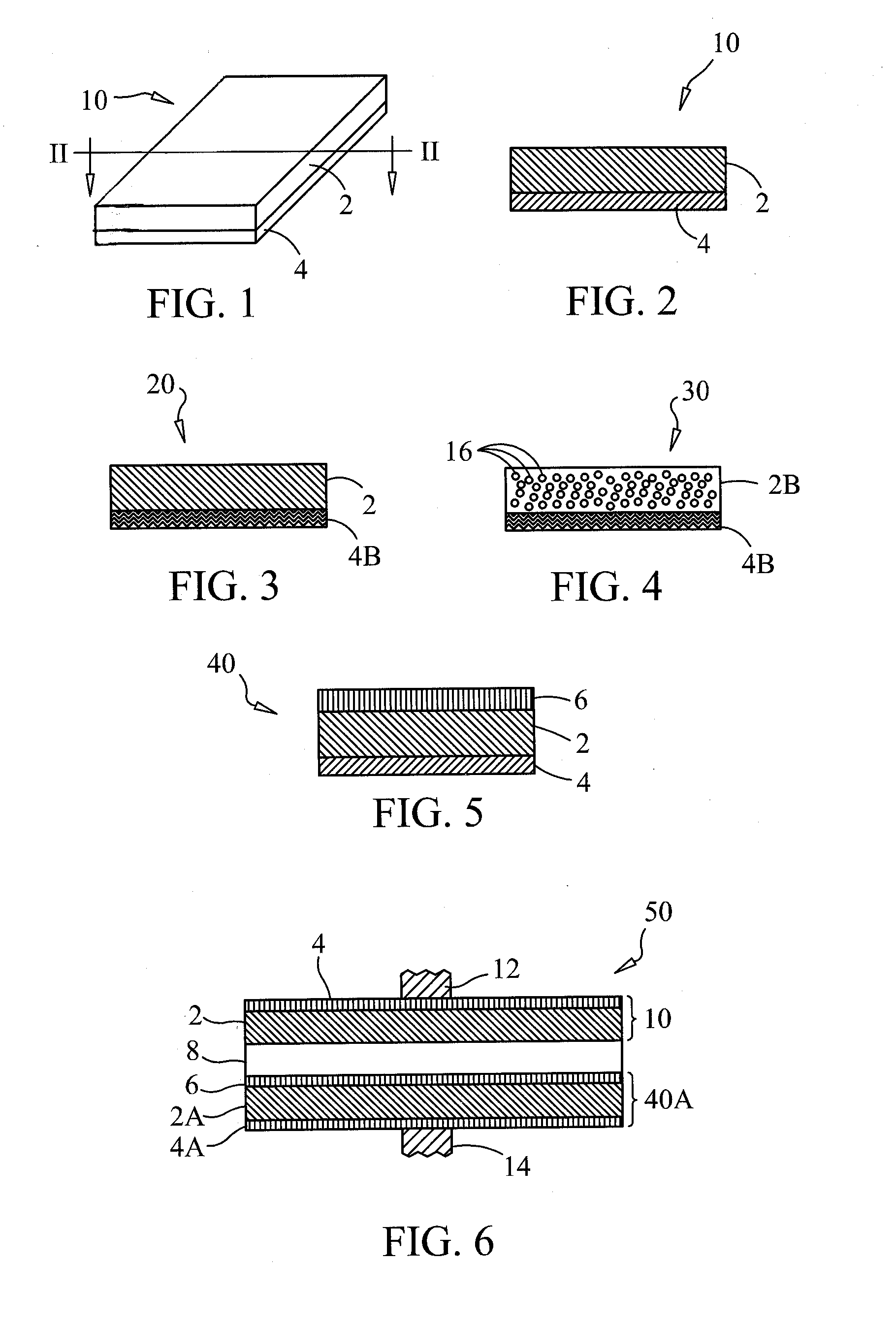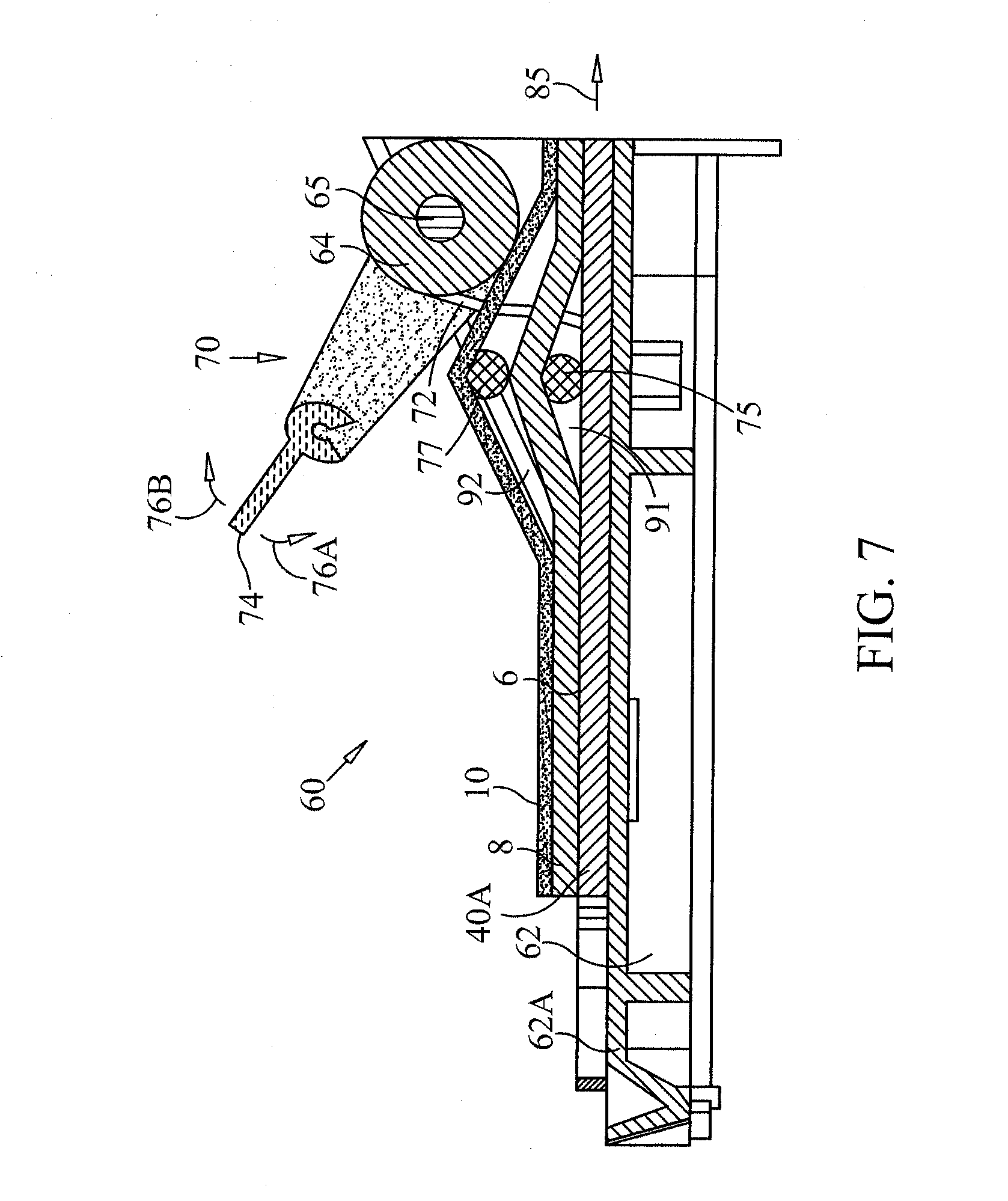Electro-blotting devices, systems, and kits, and methods for their use
- Summary
- Abstract
- Description
- Claims
- Application Information
AI Technical Summary
Benefits of technology
Problems solved by technology
Method used
Image
Examples
example 1
[0205] An E-PAGE 6% 96 gel (commercially available as Catalogue Number EP096-06 from Invitrogen Corporation, Carlsbad, Calif.) was run using an E-Base electrophoresis apparatus (commercially available as Catalogue Number EBM-03 from Invitrogen Corporation) for 14 min (program EP). Five microliters of E-PAGE See Blue pre-stained protein standard (commercially available as Catalogue Number LC5700 from Invitrogen Corporation, USA) were loaded in each of the wells of the E-PAGE gel cassette. After the completion of the run, the cassette was opened to remove the gel.
[0206] The gel with the resolved protein standards separated thereon was sandwiched between an anodic electrode assembly and a cathodic electrode assembly as disclosed in detail with respect to FIG. 6 hereinabove. The anodic electrode assembly included a copper mesh electrode made of a piece of braided copper mesh having a length of twelve centimeters and a width of eight centimeters cut from a Kiel copper pbn11 fabric, (com...
example 2
[0211] The electroblotting was performed as described in Example 1 above except that the electrically conducting electrode of the anodic electrode assembly was made from aluminum foil (Cat No. 1170, commercially available from 3M, USA) instead of the braided copper mesh used in the anodic electrode assembly of Example 1. The electro-blotting using such aluminum electrode resulted in somewhat less efficient blotting than the results of Example 1.
example 3
[0212] The electro-blotting was performed as described in Example 1 above except that the composition of the body of gel used in the anodic electrode assembly was as follows: a volume of gel comprising 4% agarose, 120 mM Bis Tris, 95 mM Tricine, 95 mM BES, 0.3% SDS and 20% ethylene glycol was mixed with same volume of wet fibrous cellulose phosphate based cation exchange matrix (Catalogue Number p11 commercially available from Whatman International Ltd., UK) loaded with Bis Tris ions, and the composition of the gel used to prepare the cathodic electrode assembly was as follows: a volume of gel comprising 4% agarose, 120 mM BIS TRIS, 95 mM Tricine, 95 mM BES, 0.3% SDS and 20% ethylene glycol was mixed with same volume of pre-swollen micro-granular diethylaminoethyl (DEAE) cellulose based anion exchange matrix (Catalogue Number DE52, commercially available from Whatman International Ltd., UK) loaded with Tricine ions. The blotting was carried out as detailed hereinabove for Example 1....
PUM
| Property | Measurement | Unit |
|---|---|---|
| Molar density | aaaaa | aaaaa |
| Molar density | aaaaa | aaaaa |
| Volume | aaaaa | aaaaa |
Abstract
Description
Claims
Application Information
 Login to View More
Login to View More - R&D
- Intellectual Property
- Life Sciences
- Materials
- Tech Scout
- Unparalleled Data Quality
- Higher Quality Content
- 60% Fewer Hallucinations
Browse by: Latest US Patents, China's latest patents, Technical Efficacy Thesaurus, Application Domain, Technology Topic, Popular Technical Reports.
© 2025 PatSnap. All rights reserved.Legal|Privacy policy|Modern Slavery Act Transparency Statement|Sitemap|About US| Contact US: help@patsnap.com



